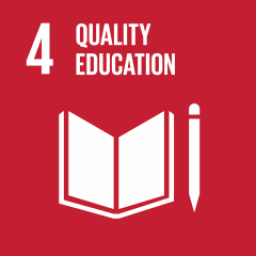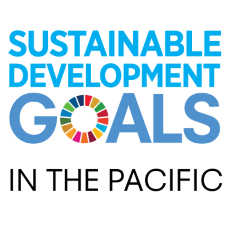
SDG 4 - Quality Education
Ensure inclusive and equitable quality education and promote lifelong learning opportunities for all
Access to education has improved, shown through increased attendance levels in early childhood, primary and secondary school in the Pacific region. Goal 4 highlights the need to focus on improving the quality and relevance of education and cognitive learning outcomes, since literacy and numeracy improvements have not made the expected gains for all. There is also a renewed focus on lifelong learning with early childhood care education and post-secondary education and training needing priority attention.
The quality of educational facilities in some countries in the region, especially for girls and students with disabilities, is below standard.
By 2030, ensure that all girls and boys complete free, equitable and quality primary and secondary education leading to relevant and effective learning outcomes
Indicator 4.1.1: Proportion of children and young people: (a) in grades 2/3; (b) at the end of primary; and (c) at the end of lower secondary achieving at least a minimum proficiency level in (i) reading and (ii) mathematics, by sex
There are multiple data sources that can be used to measure learning outcomes, including national assessments conducted by Ministries of Education, country results from regional benchmarking assessments, and global results such as the MICS survey administered by UNICEF. The following graphs use the regional Pacific Islands Literacy and Numeracy Assessment (PILNA) data. The 2018 PILNA was undertaken across 15 countries using regional standards, and covered Year 4 and Year 6 students.
By 2030, ensure that all girls and boys have access to quality early childhood development, care and pre-primary education so that they are ready for primary education
Indicator 4.2.1: Proportion of children under 5 years of age who are developmentally on track in health, learning and psychosocial well-being, by sex
NOTE: this indicator is not one of the 132 indicators in the Pacific SDG indicator subset
Indicator 4.2.2: Participation rate in organized learning (one year before the official primary entry age), by sex
By 2030, ensure equal access for all women and men to affordable and quality technical, vocational and tertiary education, including university
Indicator 4.3.1: Participation rate of youth and adults in formal and non-formal education and training in the previous 12 months, by sex
Visualisation(s) not yet available
View 4.3.1 data on PDH.stat
By 2030, substantially increase the number of youth and adults who have relevant skills, including technical and vocational skills, for employment, decent jobs and entrepreneurship
Indicator 4.4.1: Proportion of youth and adults with information and communications technology (ICT) skills, by type of skill
NOTE: this indicator is not one of the 132 indicators in the Pacific SDG indicator subset
By 2030, eliminate gender disparities in education and ensure equal access to all levels of education and vocational training for the vulnerable, including persons with disabilities, indigenous peoples and children in vulnerable situations
Indicator 4.5.1: Parity indices (female/male, rural/urban, bottom/top wealth quintile and others such as disability status, indigenous peoples and conflict-affected, as data become available) for all education indicators on this list that can be disaggregated
Gender Parity Indices represent the ratio of the indicator value for females relative to that of males. A value of 1 indicates parity between the two genders, a value higher than one indicators more females than males.
By 2030, ensure that all youth and a substantial proportion of adults, both men and women, achieve literacy and numeracy
Indicator 4.6.1: Percentage of population in a given age group achieving at least a fixed level of proficiency in functional (a) literacy and (b) numeracy skills, by sex
Visualisation(s) not yet available
View 4.6.1 data on PDH.stat
By 2030, ensure that all learners acquire the knowledge and skills needed to promote sustainable development, including, among others, through education for sustainable development and sustainable lifestyles, human rights, gender equality, promotion of a culture of peace and non-violence, global citizenship and appreciation of cultural diversity and of culture’s contribution to sustainable development
Indicator 4.7.1: Extent to which (i) global citizenship education and (ii) education for sustainable development, including gender equality and human rights, are mainstreamed at all levels in: (a) national education policies, (b) curricula, (c) teacher education and (d) student assessment
Visualisation(s) not yet available
No data for indicator 4.7.1 is currently available.
Build and upgrade education facilities that are child, disability and gender sensitive and provide safe, non-violent, inclusive and effective learning environments for all
Indicator 4.A.1: Proportion of schools offering basic services, by type of service
By 2020, substantially expand globally the number of scholarships available to developing countries, in particular least developed countries, small island developing States and African countries, for enrolment in higher education, including vocational training and information and communications technology, technical, engineering and scientific programmes, in developed countries and other developing countries
Indicator 4.B.1: Volume of official development assistance flows for scholarships by sector and type of study
NOTE: this indicator is not one of the 132 indicators in the Pacific SDG indicator subset
By 2030, substantially increase the supply of qualified teachers, including through international cooperation for teacher training in developing countries, especially least developed countries and small island developing States
Indicator 4.C.1: Proportion of teachers with the minimum required qualifications, by education level

